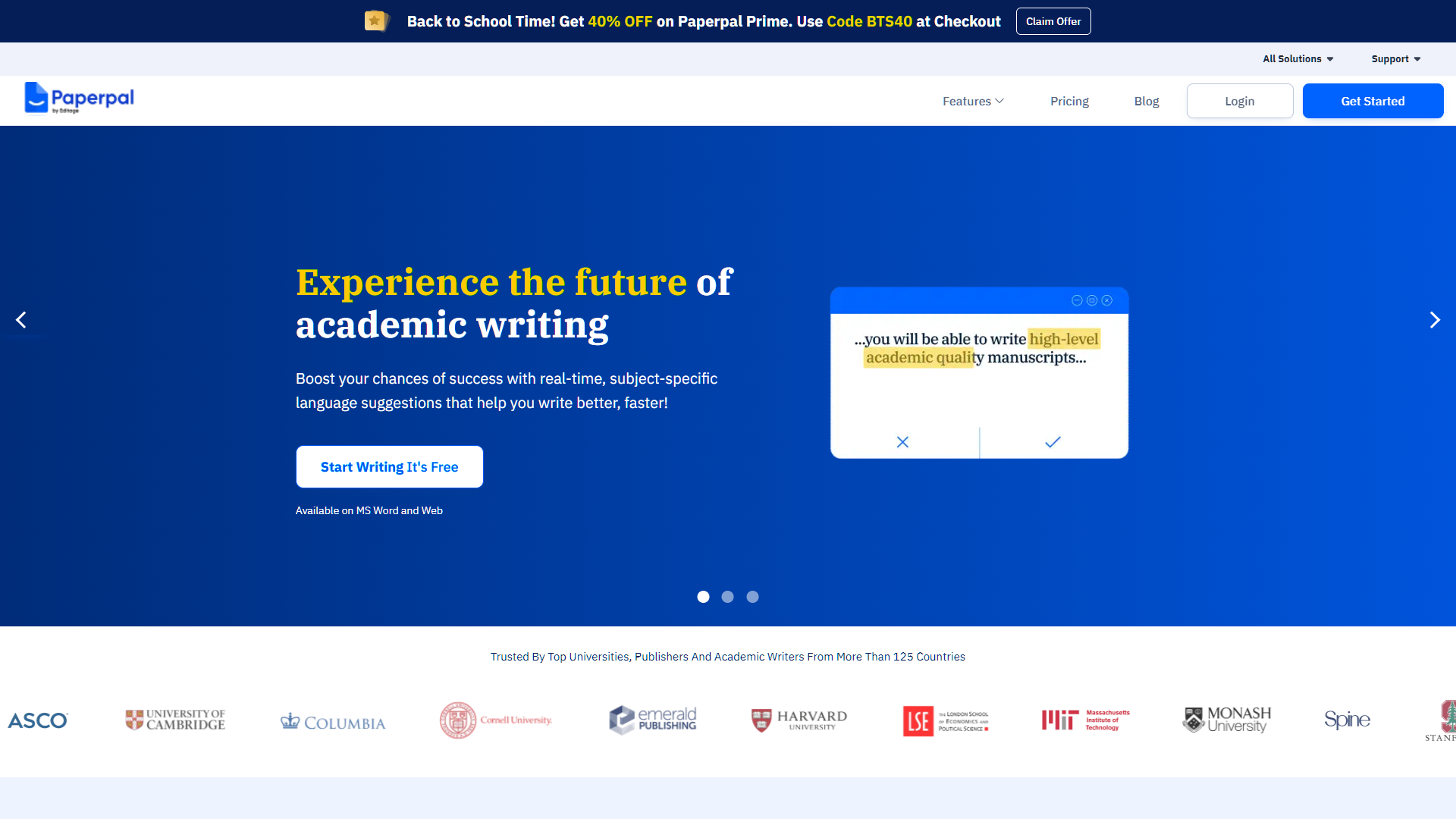Overview
Paperpal is an innovative AI-powered tool specifically designed to enhance the quality and efficiency of academic writing. It provides real-time, subject-specific language suggestions that help users refine their manuscripts to meet the rigorous standards of academic publishing. With features that extend beyond simple language corrections to include plagiarism detection and research assistance, Paperpal is a comprehensive solution for academic writers. It is widely trusted by universities, publishers, and individual researchers worldwide, thanks to its ability to offer context-sensitive enhancements and adherence to academic writing conventions.
Available as an add-on for MS Word and accessible via web platforms, Paperpal caters to a diverse range of academic writing needs. It also provides additional services such as manuscript review, online editing, and tailored AI writing assistance, supporting writers at various stages of their work. Paperpal is committed to academic writing excellence and aims to transform the writing experience for academics through its advanced, user-friendly features. Ensuring high standards of data security and user control, it also offers extensive support through FAQs and customer service, making it easy for users to get the most out of this tool. Explore more about Paperpal’s features and pricing on their regional websites and experience the future of academic writing.
Key features
- Real-time language suggestions: Provides instant, context-aware language corrections tailored to academic writing, enhancing clarity and adherence to conventions.
- Plagiarism detection: Integrates advanced plagiarism checking tools to ensure the originality of academic work, crucial for maintaining integrity in scholarly writing.
- Research assistance: Offers support in sourcing and citing relevant academic literature, streamlining the research process for more efficient writing.
- Manuscript review service: Delivers expert reviews of manuscripts, offering detailed feedback to improve the structure, content, and presentation of academic papers.
- AI writing assistant: Utilizes artificial intelligence to provide suggestions on improving writing style, grammar, and syntax, tailored specifically for academic texts.
- Data security and privacy: Ensures high standards of data protection and user privacy, allowing writers to focus on their content without concerns about data misuse.
 Pros
Pros
- Template library: Access a wide range of academic writing templates that help structure papers effectively, saving time and enhancing the overall presentation.
- Collaborative editing: Enables multiple users to work on the same document simultaneously, facilitating teamwork and improving the editing process in real-time.
- Text-to-speech feature: Converts written text into spoken words, aiding in proofreading and improving the accessibility of academic materials for all users.
- Mobile compatibility: Offers a fully functional mobile version, allowing users to work on their academic papers from anywhere, at any time.
- Customizable interface: Allows users to personalize the workspace according to their preferences, which can enhance focus and efficiency in academic writing.
 Cons
Cons
- Dependency on connectivity: Requires a stable internet connection to access all features, potentially limiting usage in areas with poor connectivity.
- Complex interface navigation: The multitude of features might overwhelm new users, making the learning curve steeper than simpler platforms.
- Limited offline functionality: Most features, including real-time suggestions and plagiarism checks, are unavailable without an internet connection.
- Generic feedback issues: AI-driven feedback might not fully grasp unique academic arguments or specialized content, leading to less personalized advice.
- Update dependency: Frequent updates are necessary to maintain tool effectiveness, which might interrupt the workflow and require adaptation.













